$90k monthly food bills, no visitors and the lion that stopped roaring: How Adelaide Zoo survived Covid
Can you smuggle a giraffe across the border? How do you keep meerkats happy? Why did the lion stop roaring? This is how Adelaide Zoo survived the worst event in its history.
SA Weekend
Don't miss out on the headlines from SA Weekend. Followed categories will be added to My News.
Rerouting a giraffe in transit at the last minute isn’t the easiest of tasks. Giraffes, after all, have some unique characteristics. And even though the Covid pandemic threw up unexpected challenges for everyone, perhaps none were quite so unusual as the ones faced by Zoos SA. The giraffe problem is just the beginning.
Noodle the giraffe was being moved from Queensland’s Australia Zoo, transported more than 2000km to Monarto last year.
Even at the best of times this requires some planning. For example, roads with low bridges and power lines need to be avoided.
But when, with the trip already under way, the South Australian government declared the state’s borders are to close at midnight, that carefully considered first plan was ripped up.
Zoos SA chief executive Elaine Bensted remembers the moment well.
“Decision time. Do we turn around? But that means staff and the giraffe go back to Australia Zoo again,’’ she recalled.
So, not only do you lose the giraffe, but there is the added wrinkle of bringing back staff members who could then be placed in hotel quarantine.
Bensted and her team turned to Google Maps. Could they reach the Victorian border before midnight?
“No they can’t. OK, which way do they go and try to reroute a giraffe at 10 o’clock at night.”
The original plan was to head from Queensland, through Dubbo in NSW, and cut across northwest Victoria.
The answer would prove to be turn off before Dubbo and head to Broken Hill. It added another four or five hours to the trip, but Noodle made it safely to Monarto.
It was that kind of pandemic for the zoo.
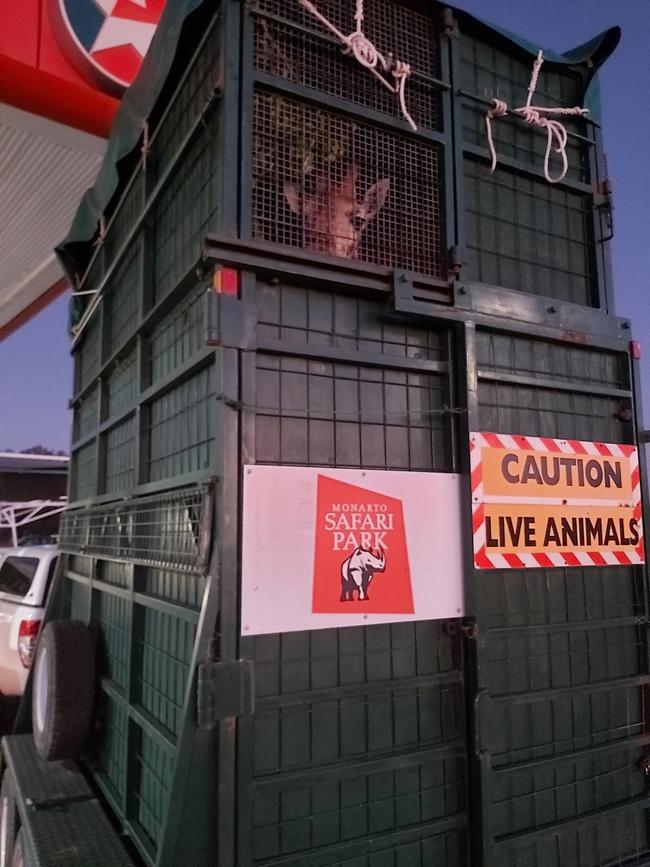
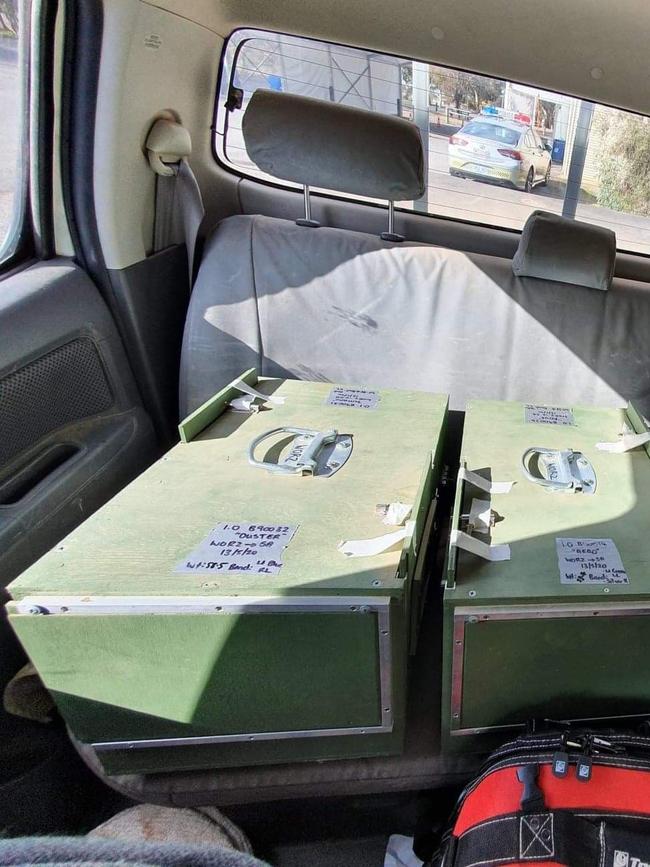
On another occasion, a crew from Werribee Zoo in Victoria met their South Australian counterparts at a border crossing near Bordertown, and pushed a box of endangered plains wanderer birds across the line with a broomstick. That’s not a technique you can use for many animals.
“You can move birds that way. You couldn’t move lions that way. So there were a number of animal transfers that just had to be put on hold because it wasn’t easy to get animals across borders with staff,’’ Bensted says.
The Covid pandemic caused all sorts of problems for all sorts of people, but the issues facing Bensted and the zoos in Adelaide and Monarto were different from most.
If you were a restaurant owner, for example, while life was very difficult, you could at least save money by not having to buy the staples of business such as food.
That wasn’t an option for Zoos SA.
Its revenue streams evaporated but animals still had to be fed, they still had to be looked after. The food bill alone was $90,000 a month.
Despite the installation of many solar panels, Zoos SA has an annual power bill of around $430,000. Animals such as pandas need airconditioning during summer, while the Sumatran orang-utans and tortoises require additional heating during the winter.
It wasn’t until May 25 this year that all of the zoos’ restrictions were lifted. That was 790 days after Adelaide and Monarto closed on March 25, 2020. When the Adelaide Zoo closed that day it was the first time it shut for more than one day since it opened in May, 1883. The only other time it didn’t open was in 2016 when someone tried to blow up its ATM.
“We’d stayed open through the Spanish flu, stayed open through two world wars, the Great Depression and I think we were seen as a sort of safe place for people to go and have a bit of time out from some pretty horrible times over history,’’ Bensted says. “So for us to say we were closing and not have any idea when we were reopening was pretty challenging.”
Bensted was forced to stand down 80 staff on no pay. The ones let go were mostly those who dealt with the public; the priority being keeping those who looked after animal welfare. The zoos’ volunteers were also told not to come in.
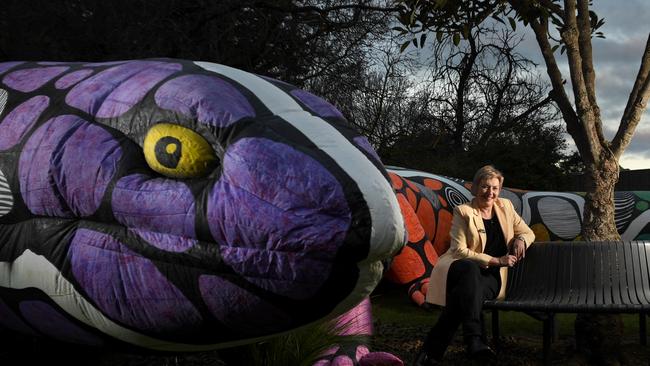
This was before the federal government’s Jobkeeper program was announced, so Bensted was handing out advice on how to access Centrelink services.
“We stood down half, we cut the hours of many others, cut the pay of many others. So it wasn’t a fun couple of days, that’s for sure.”
A week after the zoos closed, Jobkeeper was announced which Bensted says was a “lifeline for us as well as for the staff we stood down’’.
There was further help from the federal government, which provided a $95m funding package to help zoos across Australia.
Opening the zoos back up proved another challenge Bensted stresses she is not criticising SA Health, but there is an underlying frustration evident when she talks about how difficult it was to bring the public back to Adelaide and Monarto. In the end, that frustration boils down to how the zoos were categorised by officials during the pandemic.
The first sign of the easing of the pandemic in SA was in May and Bensted started to plan for the grand reopening. There were many talks with SA Health about how many people would be allowed back into both zoos. Bensted thought they had come to an agreement.
Adelaide Zoo would be allowed to operate at 20 per cent capacity, which was 1000 people a day, while Monarto would be capped at 500.
“Obviously at 20 per cent capacity, we’re still not going to be making anywhere near our normal revenue, but it was worthwhile to open the gates,” she says.
Bensted did all her planning based on the 20 per cent agreement, brought back staff, and prepared the zoos for an early June opening. It didn’t happen. When the official word came through, the Adelaide Zoo was limited to just 80 people a day, a number which would include staff and volunteers and would limit paying customers to around 40. Of those 40, 20 would probably be zoo members who had already paid their subscription.
“We’d actually be losing more money than we were already losing,” Bensted says.
The problem was one of classification.
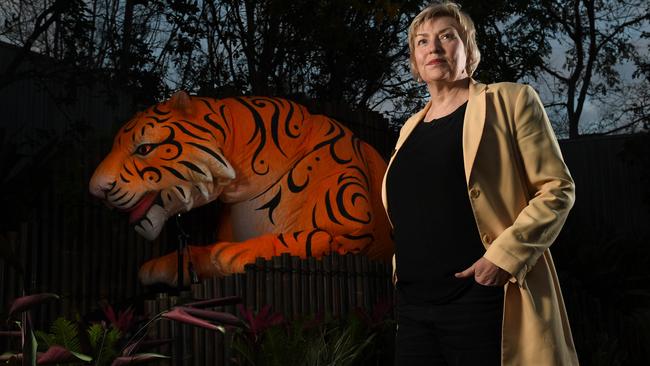
Bensted’s view was the Adelaide Zoo should be placed in the same category as the neighbouring Botanic Garden, which didn’t close during Covid. After all, like the gardens, it was a huge site, it was outdoors. But it also had a cafe and some indoor function spaces.
“Because of how they (the gardens) were classified, they stayed open throughout and they were a place of refuge, for people to go to, to take their kids to, etc,” she says.
Bensted called everyone she could to have the classification changed, from then-premier Steven Marshall down.
“The premier was very supportive but, at that stage, under the emergency directions, it wasn’t his decision,” she says.
At various times, the zoo was placed in a category alongside libraries and art galleries. At others, it was aligned to large beer gardens.
There was one commonwealth classification early in the pandemic that brought something of a wry smile. “In one of the road maps that was released by the federal government we were in with brothels and strip clubs. Interesting. Not quite sure which zoos they go to,” Bensted says.
It took another three weeks of negotiations before the zoo was allowed to re-open at 20 per cent capacity.
The number of visitors the zoos were allowed fluctuated, depending on the Covid situation. From 20 per cent to 50 per cent to 75 per cent, then back to 20 per cent after the lockdown in November 2020. Like other businesses, Zoos SA was required to complete a Covid management plan, but again Bensted chafed at what she thought were inconsistencies in the approach.
“Even on a day, in the middle of winter and freezing cold, and you’ve got 200 people in a very large 1000ha site, dead quiet, and you don’t see anyone, we had all the restrictions that an Adelaide Oval would have had,” she says.
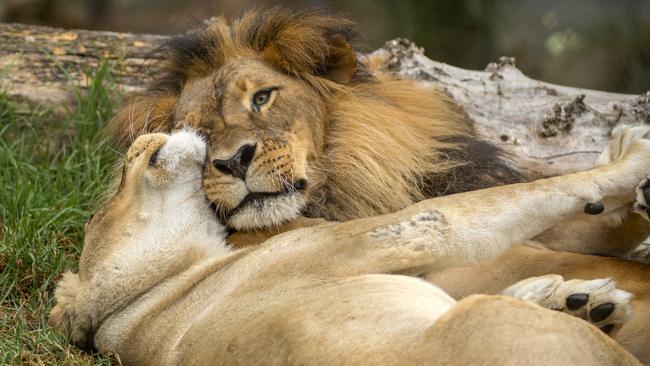
The daily press conferences featuring chief public health officer Nicola Spurrier, Police Commissioner Grant Stevens and Premier Marshall were also keenly scanned for new information or changes in restrictions.
Late at night, Bensted and her team would pore over the latest emergency management declarations. These were updates on what was and wasn’t allowed, but written in a dense, bureaucratic language that could be difficult to decipher.
“You’d be reading those and then trying to work out what signage needs to change, what website needs to change, how you communicate to your staff and volunteers what the rules are before we open. So it’s just trying to stay on top of that when it was moving so rapidly,’’ she says.
And Zoos SA had a lot to keep up with.
There is its core zoo business, but it also runs events and functions so it needed to be across whether people could stand when they were drinking or whether they could dance at a wedding. It runs education programs so needed to know Education Department rules. It runs buses at Monarto and there were different requirements for transport.
Then there were the animals that had to cope with a whole new world, and not just because it was also possible for them to catch Covid.
“We did notice some behaviour change in some of the animals,’’ Bensted says.
The gibbons became quieter.
“Our lion stopped roaring because he roars every time a plane goes overhead and that wasn’t happening,” she recalls.
A lot of effort went into keeping the animals, who missed the daily interaction with humans, “enriched”. Bensted would watch the Free Flight show every few days with the finance director.
Goats were walking around and remote-controlled cars were used to keep the meerkats entertained. The bus would continue to drive around Monarto.
“This whole kind of gallery of colour and movement has disappeared,’’ she says.
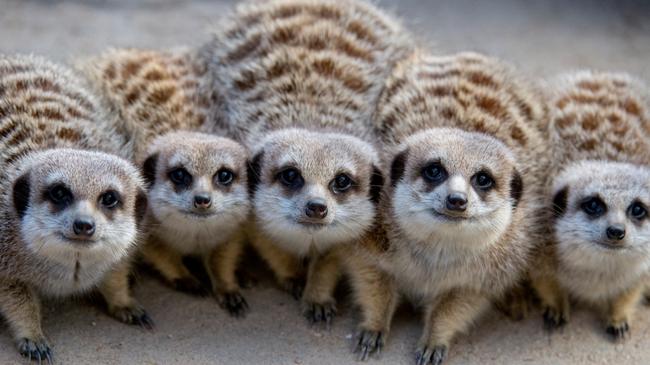
But even when it appeared the worst was over, the Covid beast would return for another bite. In January 2021, when Adelaide and Monarto were operating at 50 per cent capacity, almost every day was a sellout. That month, 46,253 visited Adelaide Zoo, while 20,761 attended Monarto. A year later, Adelaide Zoo had its worst month in its near-140-year history, even though capacity had been increased to 75 per cent. Just 32,933 people came through the gates at Adelaide Zoo and 10,533 at Monarto.
The slump was caused by the reopening of the state’s borders on November 23 last year and the subsequent wave of Covid that hit.
“I think people got scared, or they had Covid, or they were a close contact. All of those things,” Bensted says.
“It took a few months for the confidence level to build up for people to come back out.”
It’s been a tough run for Zoos SA, but Bensted knows it could have been worse; that other zoos around the world had even greater challenges during Covid. Some were forced to take out massive loans. Others had even tougher decisions.
“Some are having discussions about whether you need to euthanise some animals to feed to others. It’s absolutely heartbreaking,” she says.

In September, Bensted will have been in charge of Zoos SA for a decade. Covid was undoubtedly a setback in her plans, but she has already had to rebuild the zoo financially once.
Bensted had been chief executive of TAFE for seven years when the zoo job was advertised. Adelaide Zoo had run into all sorts of financial troubles. It had borrowed heavily to build a new entrance and function centre in the park lands. It spent around $8m on a new enclosure for pandas Wang Wang and Fu Ni. There were also developments at Monarto.
For a while, it all seemed manageable, but the global financial crisis hit, wiping out corporate sponsorship and then visitor numbers fell away. Liabilities reached $25m and emergency funding was needed from the state government, while banker Westpac agreed to forgive half of the zoo’s debt in exchange for long-term sponsorship.
Bensted won the job on her financial credentials. Historically, the organisation’s chief executives had come from traditional zoo backgrounds. Her predecessor Chris West had come from a senior job at London Zoo.
Bensted had always been keen on animals. At school she wanted to be a vet, but found a significant roadblock on that path. “I’d always wanted to be a vet, but I faint when there’s blood, needles, eyeballs, anything like that, so I couldn’t be a vet,” she says.
She says the timing of the role was “fortuitous” for her.
“There was never any doubt about the breeding programs, the conservation programs, of animal welfare. That bit was great. It was the business part of the zoo that was perhaps not going as well,” she says.
Bensted concentrated on cutting costs and increasing revenue. The zoo didn’t have the cash to offer redundancies but says money was saved through better use of casual staff and better buying systems.
She concentrated on building the zoos’ membership base. In May this year, Zoos SA had 45,712 members, up from 26,754. Membership income accounts for more than 13 per cent of Zoos SA overall revenue.
Bensted says the membership drive has helped give the zoo a more stable financial base.
“If you have a month where there’s really bad weather, if it’s really, really hot, or it’s really, really wet, you’ve still got that money there,” she says.
Bensted says Zoos SA will run a “significant budget deficit” this financial year as international visitors and weddings slowly come back on line. She calls it a “recovery year” but is predicting “then we’ll be into a beautiful 23-24 (financial) year”.
Unlike other metropolitan zoos such as Taronga Zoo in Sydney and Melbourne Zoo, Adelaide is not owned by the state government. The state government provides about 20 per cent of its annual revenue.
Bensted says it took “about three years before I did a media interview where I wasn’t asked about finance” but she was also building a plan that would determine the look of the zoos for the next 20 years. Some of that work started before Covid. The Lion 360 dome was built, as was a new kids’ playground at Adelaide.
There is no doubt Bensted is excited about what is next in the life of the zoos. Over the next few years, Monarto will become home to as many as 30 endangered rhinos. Its Wild Africa experience, which Bensted says will “be the largest safari experience in the world outside of Africa” will open next year.
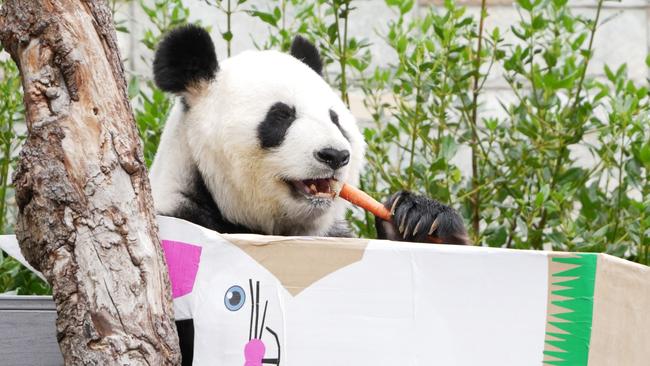
Events such as the current Light Creatures exhibition, featuring the 4m-long illuminated Sumatran tiger Cahaya and giant skink Tarutharu, will bring more people through the doors in the city. Giant pandas Wang Wang and Fu Ni will have another crack at breeding in the spring. However, the contract for the pandas with China expires in November 2024 and Bensted says it’s possible that a new pair of the animals will be sought after that. The pandas have been in Adelaide since 2009 but any extension of the contract to new pandas may require a thawing in diplomatic relations between Australia and China. But Bensted says “our relationship with China is fine from an animal point of view”.
Bensted also wants to replace 70-year-old sheds behind the old Elephant House. She wants to improve the lion enclosure and there is a possibility of a breeding program for Sumatran tigers. Delilah, a female tiger joined the zoo last New Year’s Eve and there is hope she will mate with Kembali. But this was another Covid wrinkle. Plans to bring in another female tiger were abandoned after the animal caught Covid.
Bensted also wants to better showcase Australia’s native animals. If the old sheds come down, Bensted says a 250m section of the zoo can be opened up to the River Torrens. The former Liberal government promised $7.5m before the election to help this project if it was re-elected. Labor didn’t match the promise, but Bensted has met with senior government figures including Treasurer Stephen Mullighan.
Bensted says all the projects in the city could be done for about $20m.
“We know being a conservation charity, we can deliver things pretty cheaply,” she says.
She also makes the point that investing in Adelaide Zoo is not only good for her institution.
“It’s a great project for the zoo, but it’s actually really good for Adelaide,” she says.
“We work closely with places like the Convention Bureau and to have a world-class facility within walking distance of the CBD is valuable, for a whole range of reasons, not just for us.” ■




